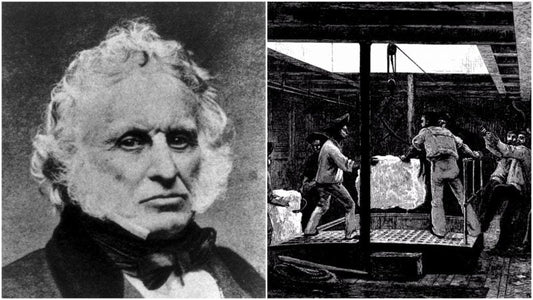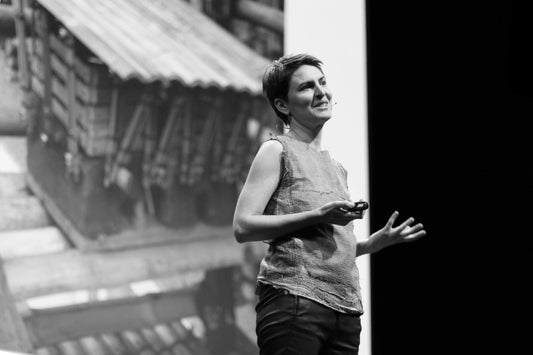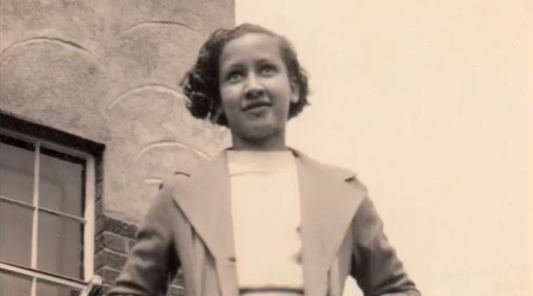
Edwin H. Land: The Man Who Made Memories Instant
In 1943, while on vacation with his family, Land’s daughter asked him a question that would change the course of photographic history:
“Why can’t I see the picture now?”
To most, it would’ve been a moment of innocent curiosity. To Land, it was a provocation. A challenge to the limits of technology. A window into a problem that didn’t yet have a name.
Three years later, the world saw the answer: the first instant camera.
No darkroom. No waiting. No mystery.
Just the image, in your hands, within minutes.
This wasn’t just an innovation. It was a cultural shift. And the man behind it? A physicist without a college degree, who saw things differently, and built the tools to make the world see them too.
Edwin Land wasn’t born into privilege, nor did he graduate from an Ivy League school. He dropped out of Harvard, not because he lacked ambition, but because he had too much of it. He wanted to work on real problems, in the real world. So, he headed to New York and snuck into Columbia University’s labs at night to test his ideas.
His first invention? Polarized film, a game-changer for everything from sunglasses to military technology. By age 19, he had founded the Polaroid Corporation and began building a legacy defined by curiosity and courage.
But it was the Polaroid instant camera, released to the public in 1948, that made him a household name. It wasn’t just about speed. It was about experience. For the first time, people could capture a memory and see it instantly, a form of visual storytelling that didn’t rely on experts or equipment. You clicked, and there it was: the moment, made physical.
Artists like Andy Warhol and Ansel Adams became evangelists. Scientists, doctors, journalists, they all found new uses for the technology. Even NASA used Polaroid to document the early space missions.
Click here to listen to the full podcast
Land didn’t separate science from art. He believed that true innovation required both. His labs were filled not just with engineers, but with musicians, painters, and poets. He famously said:
“I want Polaroid to stand at the intersection of art and science, where beauty and utility meet.”
Before Apple made product design a religion, Land was preaching it. Before “user experience” became a buzzword, Land was designing for it. Every Polaroid product was simple, sleek, and purposeful.
No instruction manuals. No confusion. Just magic in your hands.
At Corkscrew Minds, we define a different kind of thinker. One who doesn’t climb ladders, but builds tunnels and bridges across disciplines. A Corkscrew Mind doesn’t just innovate within systems, they reinvent the system itself.
Edwin Land was one of us.
He looked at the status quo and bent it. He didn't follow trends, he created industries. His work gave birth to a visual culture that shaped generations.
Even Steve Jobs admired Land deeply. He modeled Apple after Polaroid, controlling everything from hardware to experience. Jobs once said, “Edwin Land was, in my mind, a national treasure.”
But Land’s story is more than a tale of invention. It’s a roadmap for creators.
Land wasn’t afraid to fail. In fact, he saw failure as part of the process. He once attempted a high-risk “Polavision” video technology that flopped spectacularly in the face of emerging VHS systems. But that didn’t define him.
What defined him was vision, and the determination to chase it, even when it seemed irrational. Even when it meant building the future from scratch.
He believed in asking better questions. In challenging not just what things are, but what they could be.
What Land Teaches Us Today
We live in a world where everything is instant, messages, food, entertainment. But Land was the first to ask:
What if memory could be instant too?
What if we didn’t have to wait to see the result?
And he made it happen.
For today’s innovators, designers, and curious minds, Land’s story is a reminder:
You don’t need permission.
You don’t need to follow the rules.
You need a question, a problem worth solving, and the courage to solve it your way.
So, what’s your daughter’s question?
What’s the one thing someone asked, or you wondered, that hasn’t left your mind?
Maybe it’s time to build the answer.
Because like Edwin Land, you don’t need to wait.





